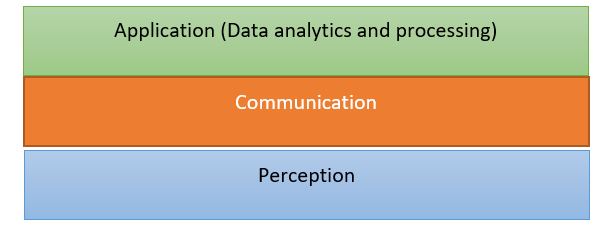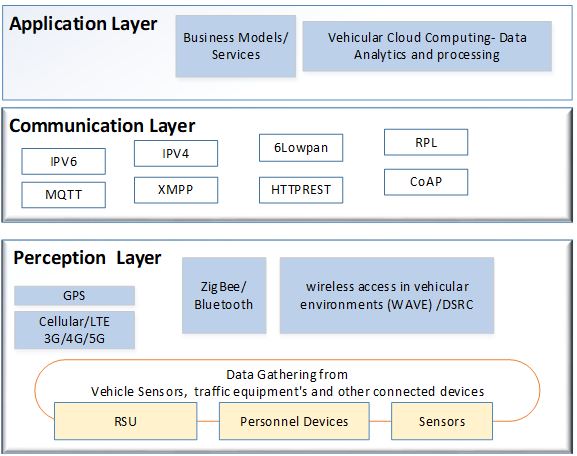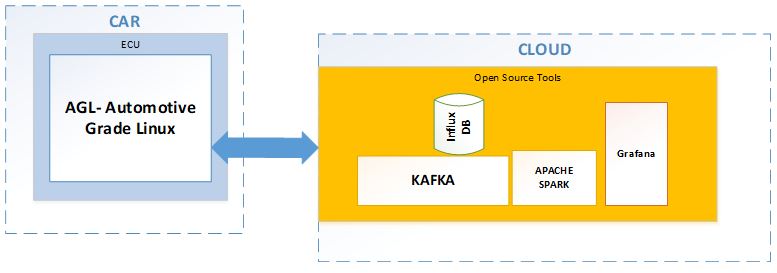The automotive industry is one among the largest and most beneficial industries in the world. As vehicles come under the product category, it depends upon various technologies like embedded systems, data analytics, sensors, etc to operate efficiently. Especially the embedded system technology, because it has a major role as the electronic control unit (ECU) is the key component of embedded automotive. It can also be considered as the brain of the vehicle.
Nowadays, every domain, verticals, and service are trying to implement smart innovative solutions along with their existing products to make them more efficient and user-friendly. Similarly, with help of Internet of Things (IoT) technology, the vehicle industry too were able to deliver smart vehicles also referred to as IoV (Internet of Vehicles). IoT services are driving the evolution of conventional Vehicle Ad-hoc Networks into the Internet of Vehicles (IoV) with the help of different computation and communication technologies. With the emergence of self-driving and smart vehicles, IoV promises a huge commercial interest and research value.
IoV is a network of vehicles that exchange data over the internet according to agreed standards. IoV systems consist of sensors, software, communication protocols, and embedded hardware devices, etc. We can also say that IoV is the implementation of IoT in the automotive industry.
IoV evolved from Vehicular Ad Hoc Networks. It provides safety, security, and convenience i.e. a union of Vehicular Ad Hoc Network (VANET) with IoT. This technology addresses a lot of challenges that exist in the automotive industry like road safety, traffic congestion, reduce fuel consumption and pollution, etc. IoV promises a wide range of opportunities to automotive manufactures. So it became necessary to be part of the automotive industry since companies wanted their vehicles to be competitive in an ever-evolving market.
IoV has different components that range from connected cars and smart driving to vehicle tracking and Vehicle-to-everything. It achieves these components mainly through the integration inter-vehicle network and a vehicular mobile network. Also, with the Vehicle-to-everything (V2X) technology it is capable of transferring information to another surrounding vehicle or any other entity and vice versa.
V2X communication is the communication between a vehicle and any entity that may affect or may not be affected by the vehicle. The major underlying communication method used in this technology are WLAN and Cellular communication. A specially designed automotive communication DSRC (Dedicated Short Range Communication) (802.11p.) and the most recent cellular technology C-V2X plays a major role in this.

Based on the vehicle’s connection with different entities V2X can be classified into different categories.

Application Layer: Vehicular cloud computing is the main role of this layer. Other roles such as data processing decision making, big data analysis etc also come under this layer. From a business or service point of view, this layer can provide a wide range of opportunities.
Communication Layer: This layer covers the communication part of IoV. It supports different protocols for data transfer.
Perception Layer: It gathers the information from sensors which is connected to vehicles. It also collects data from Road Side Units (RSU) and other personnel devices. The perception layer is mainly used for collecting the details and different protocols are implemented depending upon the interfaces.

The global Internet of vehicles market is expected to reach $ 2,08,107 million by 2024. Internet of vehicle business market spreads in different segments.

Cloud service models have improved our modern life in many aspects. Cloud plays a major role in IoV. It is a critical component of IoV architecture as it features the combination of Cloud, Connection, and Clients.
Automotive Grade Linux (AGL) is one example that has enhanced connected car architecture with the help of several efficient open-source resources. AGL is a collaborative open-source project hosted at Linux Foundation that is bringing together automakers, suppliers, and technology companies, to accelerate the development and adoption of a fully open software stack for the connected car. Linux is the core of this platform. AGL is developing an open-source platform that can serve as a de facto industry standard to help a rapid development in the automotive domain. It provides a leg up to the automakers by having one platform to build on top of it.
Main features of AGL
An open-source IoV implementation sample by using AGL

Software-Defined Network (SDN) and Network Function Virtualization (NFV) technologies enhance the performance of IoV. SD-IoV enabled routing for the internet of vehicles helps to handle a highly dynamic network. The evolution of the 5G technology and Cellular network will expand the possibilities of Cellular communication in IoV.
In conclusion, we can say that the revolutionary technology IoV (Internet of vehicle) provides countless opportunities to automotive manufactures and it also provides a safe driving experience to the passengers. In the competitive world, IoV has become an essential part of the automotive industry. The business benefit of IoV spreads in different areas like components, technology, and communication areas. The evolution of 5G increases the speed and efficiency of IoV applications in the automotive industry. Integration of SDN/NFV technologies with IoV enhances security and efficiency, especially for SD-IoV and SDN-enabled routing.